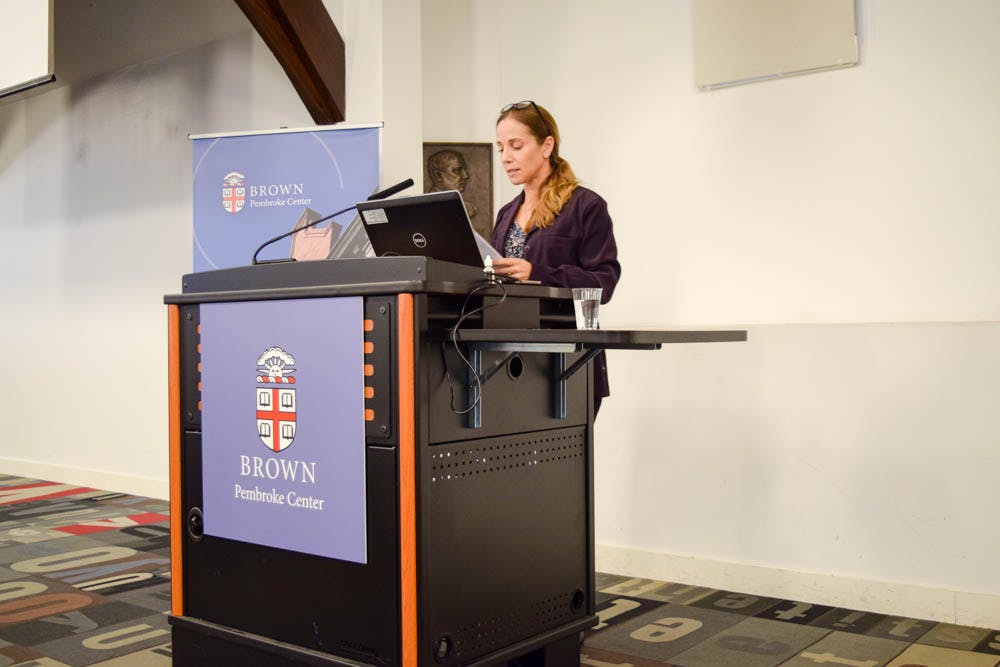The construction of the Sardar Sarovar Dam caused extreme flooding near the Narmada River in India, compelling many thousands of people to move out of their homes. But some remained close to the river instead of following the resettlement program, choosing to stay on the land “considered to be sacred for them,” explained Tracy Guzmán, associate professor of Latin American studies at the University of Miami, during a lecture Tuesday afternoon. Dozens of dam projects like this were constructed along the Narmada River, which ultimately displaced indigenous peoples and the Dalit population, the lowest Hindu caste.
In her lecture “Transcontinental Indigeneity: Linking the Americas and the Global South,” part of the Sawyer Seminars series, Guzmán discussed indigenous activists from India, Peru, Brazil and the United States who have struggled and fought to maintain their relationships with bodies of water and land. Throughout her talk, Guzmán emphasized that “the current debates regarding the ecological price of capitalist modernization were foregrounded long ago by native communities.”
The people displaced by the flooding along the Narmada River do not “analyze and quantify the natural world exclusively in the world of productivity and profit,” she added.
The lecture was sponsored by the Center for Latin American and Caribbean Studies, the Pembroke Center and the Sawyer Seminar on Race and Indigeneity in the Americas. In it, Guzmán discussed the concept of indigeneity, which she said has evolved to not be confined to a specific set of qualities or qualifications to allow “people across the world to self-identify as indigenous.” According to Guzmán, this notion has taken on a political meaning. “We have witnessed the rapid growth of a social, political, cultural and philosophical movement around the notion of indigeneity itself,” she said.
She discussed a protest by Jeguaká Mirim, an indigenous Brazilian teenager, who walked on the World Cup field in Sao Paulo as a representative of indigenous peoples in Brazil. While on the field, he unexpectedly held up a red banner reading “Demarcation Now!” — a request to define the boundaries of indigenous lands. He was promptly escorted off the field, Guzmán said.
“Indigenous citizens, like Mirim … are expected to stand in for all native populations, especially during celebrated remembrances of conquest, like Thanksgiving,” she added. “They are not called upon to represent native peoples in the present, but to perform a ‘fetishized notion’ of what mainstream society thinks being native means.
Guzmán also addressed a plan to build dozens of hydroelectric dams along the Marañon River in Peru, which, if built, “would have proven lethal to local ecosystems, aquatic and terrestrial biodiversity and the indigenous communities with whom they coexisted,” she said.
Only two of these dams are now being built, which Guzmán says is largely due to the advocacy of local people with the support of civil society groups, environmental law firms and global water activists. Many of the government leaders and industry executives are now in jail or charged with corruption, she added.
Guzmán also made an effort to call attention to the relationship between the University’s land and various indigeneous groups.
“I’d first wish to acknowledge that this meeting takes place on the ancestral lands” of people like the Narragansett and Wampanoag, she said. “And I wish to pay my respects to the members of those communities, past and present.”
Anthony Pratcher, postdoctoral research associate in race and ethnicity, attended the lecture to understand indigeneity and how it could influence his research and teaching.
“When we start thinking through indigeneity, we can start thinking through different ways society is organized, different ways that we can create community, different ways that we should relate to the land and to people around us,” Pratcher said.





